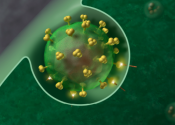Can scientists use gene editing for disease prevention but not human enhancement?
On the same day a Chinese scientist announced he had used CRISPR gene editing technology to give twin babies resistance to HIV infection, a team of UNC School of Medicine bioethics professors published a paper entitled "Is ...








